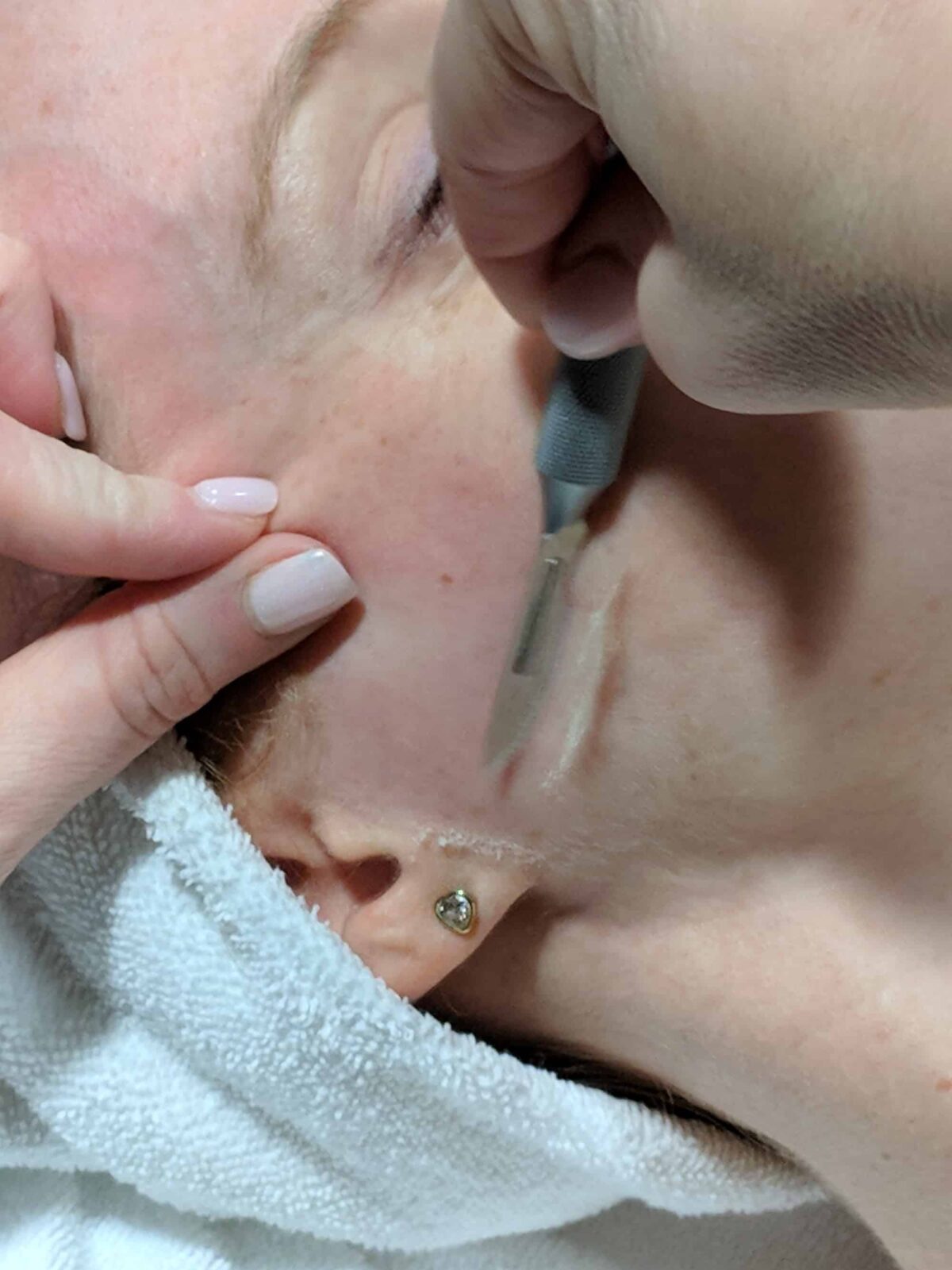By: Stephanie Vendetti, Co-Founder of How to be a Redhead
I’ll be the first to admit it: I have a hairy face. I get it from Adrienne and I’s mom. The hairs are all mainly blonde, but there’s a lot of them. I don’t usually notice them until I am really up-close and personal to a mirror (hello car mirror) or after applying a tinted moisturizer or foundation. Then, they pop out like, ‘Woah! Here I am!’.
For the past several months, I have actually shaved the bottom half of my face with a tiny brow razor. The razor part sounds complicated, but it’s pretty easy. Except for the fact that when you do shave your face, you need to be on top of it. Meaning you need to shave every few days, which I sometimes neglect.
I’ve been hearing about dermaplaning for quite some time now and thought I’d give it a try on my redhead skin. This technique, done by a certified esthetician, removes the facial hair and exfoliates the skin. It is performed using a metal blade that gently scrapes over the skin at an angle. Don’t worry, you won’t get cut.
I got my first dermaplaning done at Capizzi MD in Charlotte, NC and my skin LOVED it. I left with a hairless, soft and glowing complexion. Wendy Culbertson, a licensed esthetician at Capizzi, sat down with me to answer some popular dermaplaning questions.
H2BAR (SV): Who is a good candidate for dermaplaning?
WC: Everyone is a good candidate for dermaplaning! A dermaplane is a manual exfoliation that reveals a brighter complexion, reduction in pore size, fine lines, dark spots, and as a bonus vellus hair is removed. As a “bonus” result, a dermaplane treatment provides smoother makeup application.
H2BAR: Does the hair grow back thicker?
WC: We do get this question a lot and we’re happy to report that no, hair does not grow back thicker. Dermaplaning treats surface hair only and not the follicle.
H2BAR: How often should you get dermaplaning?
WC: We would recommend every 4-6 weeks depending on your skin and desired results. As we age, our skin cell renewal slows down. Dermaplaning is an ideal option to keep new skin cells on the surface and skin looking its best. Dead skin cells accentuate texture, dark spots and clogged pores. Therefore, making the dermaplaning part a skin care regimen will provide the patient with instant results that benefit the skin in multiple ways.
H2BAR: Does the climate outside affect your reaction after receiving the treatment?
WC: The climate outside does not affect your reaction after receiving a dermaplane. However, sunscreen should be worn on a daily basis and at Capizzi MD we always recommend avoiding prolonged or direct exposure in the sun immediately following a dermaplane, as you are revealing new skin cells that are more sensitive and reactive to the sun’s harmful UVA/UVB rays.
H2BAR: How long is the overall treatment?
WC: The dermaplane treatment only takes 45 minutes to an hour. The treatment is not painful. We find our patients feel at ease throughout the procedure.”
H2BAR: How should you schedule your chemical peel to go along with the dermplane?
WC: We usually recommend a dermaplane session ahead of a chemical peel, to maximize results of the peel. The dermaplane allows the chemical peel to penetrate deeper into the epidermis, minimizing shedding post procedure, meaning less downtime than with a peel without a prior dermaplane.”
See the treatment steps below:
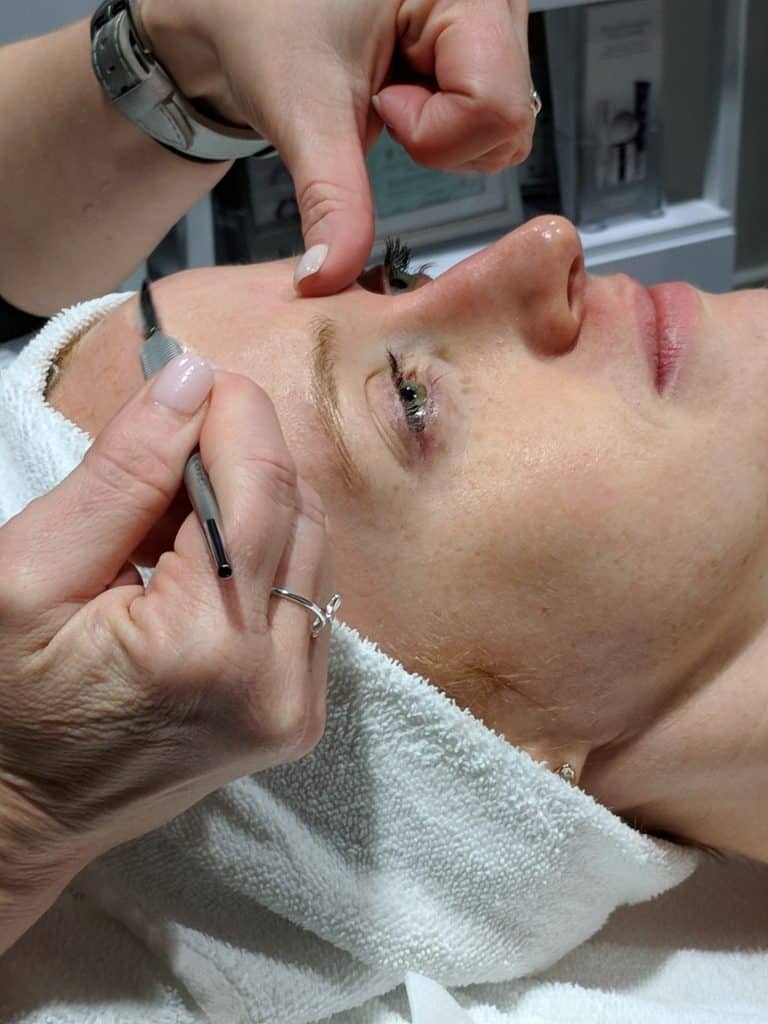
Wendy first cleansed my skin to get rid of all the debris, dirt and makeup on my skin.
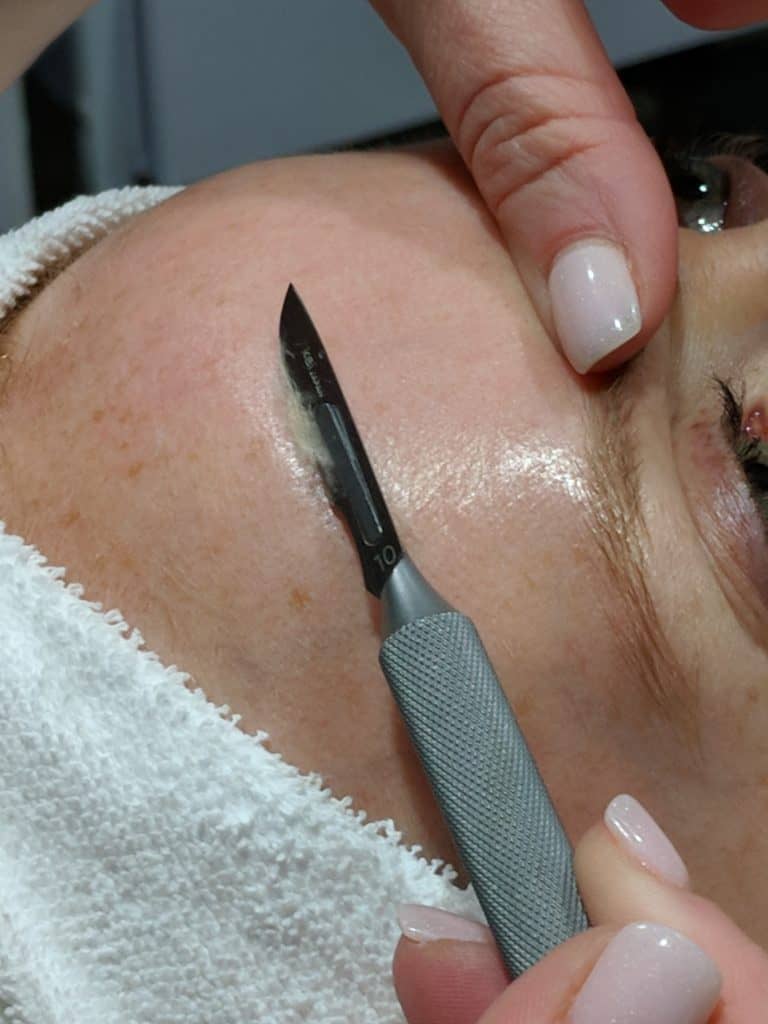
The dermaplaning began!
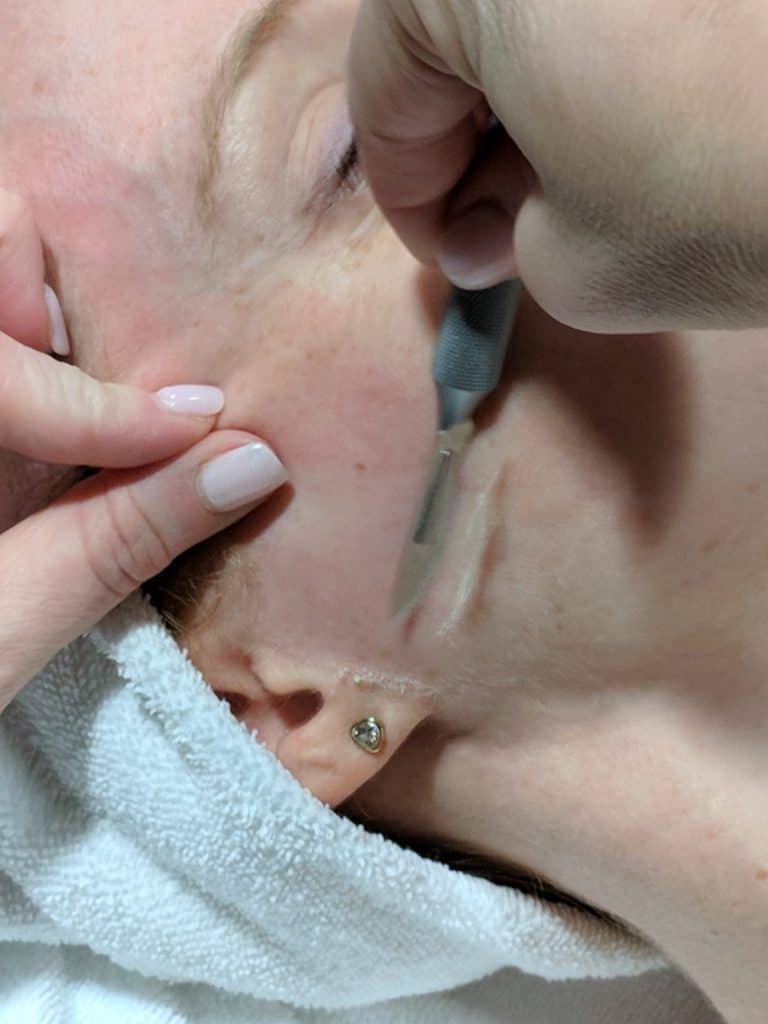
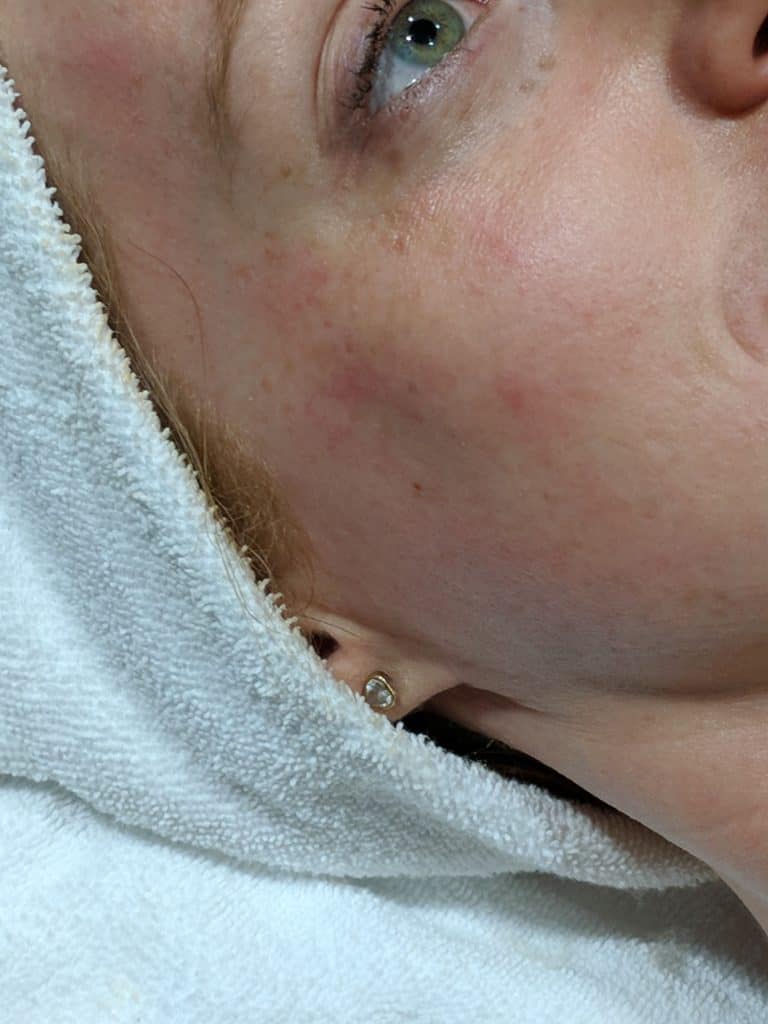
The end result!
After the treatment, Wendy applied a hydrating serum on my skin and locked it all in with a broad-spectrum sunscreen. This is a very important step since after dermaplaning (there are no protective dead cells on the surface of the skin), you’re more susceptible to the damaging UV rays.
My skin didn’t have to go through any downtime, other than the fact that my skin was a bit red for 1-2 hours. It’s been about a week now and my skin still feels great.
My top piece of advice: Make sure you go to a reputable place to get this done. It’s your face and a razor is involved. Do your research and if you’re feeling nervous but want to give it a try, schedule a consultation with the esthetician. Share with them your concerns, as well as your skin history.
I also want to make a note that dermaplaning isn’t for everyone. I loved getting it done and it boosted my confidence — while making my skin glow. You have the right to do what you want with your hair and body. If you love your facial hair, then, by all means, rock it!

